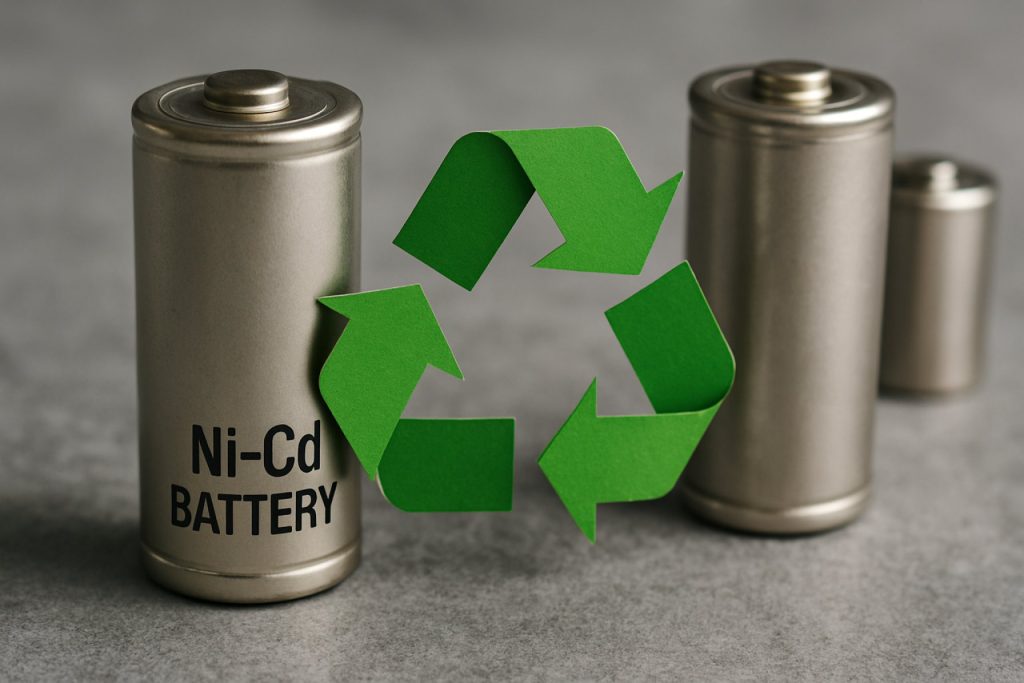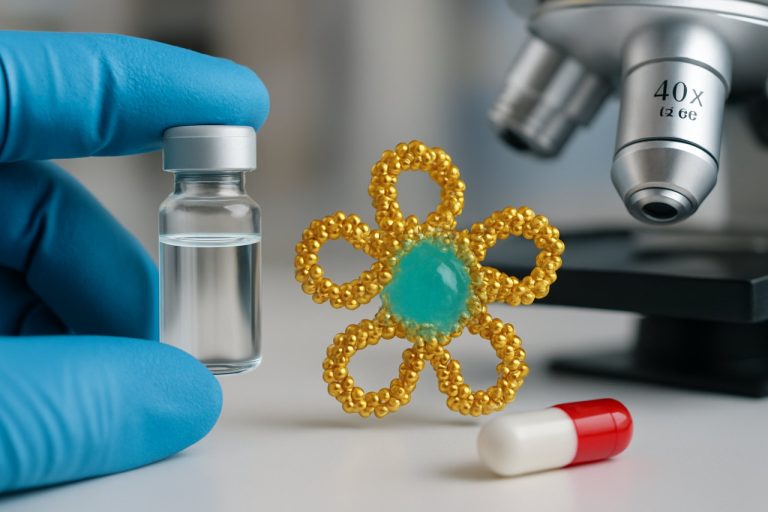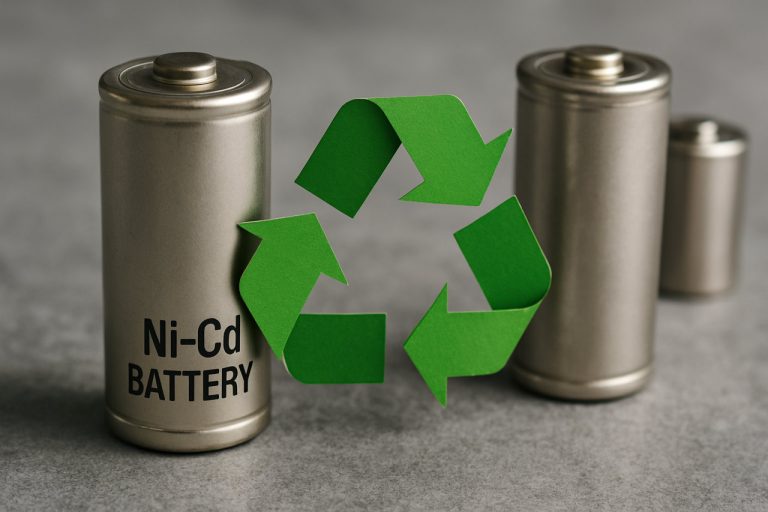
Nickel-Cadmium Battery Recycling Technologies in 2025: Innovations, Market Growth, and the Road to Sustainable Energy Storage. Explore how advanced recycling is reshaping the industry and driving a greener future.
- Executive Summary: Key Trends and Market Drivers in 2025
- Global Market Size and Growth Forecast (2025–2030)
- Regulatory Landscape and Compliance Initiatives
- Technological Innovations in Nickel-Cadmium Battery Recycling
- Competitive Landscape: Leading Companies and Strategic Partnerships
- Supply Chain Dynamics and Raw Material Recovery
- Environmental Impact and Sustainability Metrics
- Regional Analysis: North America, Europe, Asia-Pacific, and Emerging Markets
- Challenges, Risks, and Barriers to Adoption
- Future Outlook: Opportunities and Strategic Recommendations
- Sources & References
Executive Summary: Key Trends and Market Drivers in 2025
Nickel-cadmium (Ni-Cd) battery recycling technologies are undergoing significant transformation in 2025, driven by tightening environmental regulations, advances in recycling processes, and the global push for sustainable resource management. The market is shaped by the need to safely handle cadmium, a hazardous heavy metal, and to recover valuable nickel for reuse in new batteries and other industrial applications.
A key trend in 2025 is the increasing adoption of advanced hydrometallurgical and pyrometallurgical recycling methods. Hydrometallurgical processes, which use aqueous solutions to extract metals, are gaining traction due to their higher recovery rates and lower environmental impact compared to traditional pyrometallurgical (high-temperature) methods. Leading battery manufacturers and recyclers are investing in these technologies to improve efficiency and comply with stricter regulations on cadmium emissions and waste disposal.
Europe remains at the forefront of Ni-Cd battery recycling, propelled by the European Union’s Battery Directive, which mandates high collection and recycling rates for portable batteries. Companies such as Umicore have established large-scale recycling facilities that process Ni-Cd batteries using proprietary hydrometallurgical techniques, enabling the recovery of both nickel and cadmium for reintroduction into the supply chain. Similarly, SNAM, a major French recycler, continues to expand its capacity and technological capabilities to meet growing demand and regulatory requirements.
In North America, regulatory momentum is also building. The U.S. Environmental Protection Agency (EPA) and state-level agencies are encouraging the collection and recycling of Ni-Cd batteries, with industry players like Call2Recycle facilitating nationwide take-back programs. These initiatives are expected to boost recycling rates and support the development of more efficient recycling infrastructure in the coming years.
Asia-Pacific, particularly China and Japan, is witnessing rapid growth in Ni-Cd battery recycling, driven by industrial demand and government policies targeting hazardous waste management. Companies such as GEM Co., Ltd. are investing in state-of-the-art recycling plants, leveraging both hydrometallurgical and pyrometallurgical processes to maximize material recovery and minimize environmental impact.
Looking ahead, the outlook for Ni-Cd battery recycling technologies in 2025 and beyond is shaped by ongoing innovation, regulatory pressure, and the circular economy imperative. Industry leaders are expected to further refine recycling processes, increase automation, and enhance traceability of recovered materials. As a result, the sector is poised for continued growth, with improved environmental outcomes and greater resource efficiency.
Global Market Size and Growth Forecast (2025–2030)
The global market for nickel-cadmium (Ni-Cd) battery recycling technologies is poised for steady growth from 2025 through 2030, driven by tightening environmental regulations, increasing industrial battery usage, and the ongoing transition to circular economy models. As of 2025, the market is characterized by a combination of established recycling infrastructure in developed regions and emerging capacity in Asia-Pacific and Latin America. The European Union remains a leader in Ni-Cd battery collection and recycling, propelled by stringent directives such as the EU Battery Directive, which mandates high collection and recycling rates for portable and industrial batteries.
Major industry players, including Umicore and SNAM, operate advanced hydrometallurgical and pyrometallurgical recycling facilities in Europe, processing thousands of tonnes of spent Ni-Cd batteries annually. Umicore’s facilities in Belgium, for example, are recognized for their closed-loop processes, recovering cadmium, nickel, and iron for reuse in new batteries and other industrial applications. In North America, companies such as Call2Recycle coordinate collection and recycling programs, partnering with manufacturers and retailers to ensure compliance with regulatory requirements and to divert hazardous materials from landfills.
In Asia, the market is expanding rapidly, with China and Japan investing in new recycling plants to address the growing volume of industrial and consumer Ni-Cd batteries. Chinese firms, including GEM Co., Ltd., are scaling up operations to meet both domestic demand and international export opportunities, leveraging government incentives and stricter waste management policies.
From 2025 to 2030, the global Ni-Cd battery recycling market is expected to grow at a moderate compound annual growth rate (CAGR), with estimates ranging from 4% to 6% annually, depending on regional policy developments and technological advancements. Growth will be supported by the gradual phase-out of Ni-Cd batteries in some applications, which will increase the volume of end-of-life batteries entering the recycling stream. However, the persistence of Ni-Cd batteries in critical sectors such as emergency lighting, aviation, and railways will sustain a steady supply for recyclers.
Looking ahead, the market outlook is shaped by ongoing innovation in recycling technologies, including improved separation and purification processes, as well as the integration of digital tracking systems for battery lifecycle management. Industry leaders such as Umicore and SNAM are expected to maintain their competitive edge through continued investment in R&D and expansion of global collection networks, ensuring the sector’s resilience and adaptability through 2030.
Regulatory Landscape and Compliance Initiatives
The regulatory landscape for nickel-cadmium (Ni-Cd) battery recycling is evolving rapidly in 2025, driven by environmental concerns and the need to recover critical materials. Ni-Cd batteries, once widely used in industrial, medical, and emergency backup applications, are now subject to stringent regulations due to the toxicity of cadmium and the environmental risks associated with improper disposal. The European Union remains at the forefront, enforcing the Battery Directive (2006/66/EC) and its amendments, which mandate the collection and recycling of all portable batteries, including Ni-Cd, and set ambitious recycling efficiency targets. In 2023, the EU adopted a new Batteries Regulation, further tightening requirements for extended producer responsibility, minimum recycled content, and traceability, with full implementation expected by 2025 and beyond.
In North America, the United States Environmental Protection Agency (EPA) regulates Ni-Cd battery disposal under the Universal Waste Rule, classifying them as hazardous waste and requiring specific handling and recycling protocols. Canada enforces similar stewardship programs, with provinces like British Columbia and Ontario mandating producer responsibility for battery collection and recycling. These frameworks are prompting battery manufacturers and recyclers to invest in advanced recycling technologies and compliance systems.
Industry-led compliance initiatives are also shaping the sector. Organizations such as Call2Recycle in North America operate nationwide collection and recycling programs, partnering with retailers, municipalities, and manufacturers to ensure safe handling and processing of Ni-Cd batteries. In Europe, Umicore is a leading recycler, operating state-of-the-art hydrometallurgical and pyrometallurgical facilities that recover cadmium, nickel, and other metals from spent batteries. Stibat in the Netherlands coordinates national collection and recycling efforts, reporting high recovery rates and compliance with EU directives.
Looking ahead, regulatory pressure is expected to intensify, with more countries adopting or updating battery recycling legislation to align with global sustainability goals. The EU’s new regulation will require digital battery passports and higher recycled content thresholds, pushing manufacturers to improve traceability and invest in closed-loop recycling. In Asia, countries like Japan and South Korea are strengthening e-waste and battery recycling laws, while China is expanding its regulatory framework to cover a broader range of battery chemistries, including Ni-Cd.
Overall, the next few years will see increased collaboration between regulators, manufacturers, and recyclers to ensure compliance, improve recycling rates, and minimize the environmental impact of Ni-Cd batteries. Companies with established recycling infrastructure and robust compliance programs, such as Umicore and Call2Recycle, are well-positioned to lead the sector as regulatory requirements become more demanding.
Technological Innovations in Nickel-Cadmium Battery Recycling
Nickel-cadmium (Ni-Cd) battery recycling technologies are undergoing significant transformation as regulatory pressures and sustainability goals intensify in 2025 and beyond. The recycling of Ni-Cd batteries is critical due to the hazardous nature of cadmium and the value of nickel, both of which are classified as critical raw materials in many jurisdictions. Traditional recycling methods, such as pyrometallurgical and hydrometallurgical processes, remain prevalent, but recent years have seen a surge in technological innovation aimed at improving efficiency, safety, and environmental performance.
Pyrometallurgical recycling, which involves high-temperature smelting to recover metals, continues to be widely used by established recyclers. For example, Umicore, a global leader in materials technology and recycling, operates large-scale facilities that process Ni-Cd batteries alongside other chemistries. Their processes are designed to maximize metal recovery while minimizing emissions, and they have invested in advanced gas treatment systems to address cadmium’s toxicity. Similarly, Accurec Recycling GmbH in Germany specializes in both pyrometallurgical and hydrometallurgical techniques, with a focus on closed-loop systems that enable the direct reuse of recovered nickel and cadmium in new battery production.
Hydrometallurgical processes, which use aqueous solutions to selectively leach and separate metals, are gaining traction due to their lower energy requirements and potential for higher purity outputs. Companies like Snam S.p.A. in Italy have developed proprietary hydrometallurgical methods that allow for the efficient recovery of cadmium as a pure metal and nickel as a salt, both of which can be reintroduced into industrial supply chains. These processes are being refined to reduce chemical consumption and waste generation, aligning with the European Union’s tightening environmental standards.
Looking ahead, the next few years are expected to bring further advancements in automation, process integration, and digital monitoring within Ni-Cd battery recycling plants. Robotics and AI-driven sorting systems are being piloted to improve the identification and separation of battery types, reducing contamination and increasing throughput. Additionally, research collaborations between industry and academia are exploring bioleaching and electrochemical recovery methods, which could offer even greener alternatives in the future.
The outlook for Ni-Cd battery recycling technologies in 2025 and beyond is shaped by both regulatory mandates—such as the EU Battery Regulation—and the ongoing shift toward circular economy models. Leading recyclers like Umicore, Accurec Recycling GmbH, and Snam S.p.A. are expected to continue driving innovation, ensuring that Ni-Cd batteries are safely and efficiently recycled, and that valuable materials are returned to the market in line with global sustainability objectives.
Competitive Landscape: Leading Companies and Strategic Partnerships
The competitive landscape for nickel-cadmium (Ni-Cd) battery recycling technologies in 2025 is shaped by a mix of established industrial recyclers, battery manufacturers, and emerging technology providers. The sector is characterized by strategic partnerships, investments in advanced recycling processes, and a growing emphasis on regulatory compliance and environmental stewardship.
Among the global leaders, Umicore stands out with its long-standing expertise in battery recycling, including dedicated facilities for Ni-Cd batteries. The company operates advanced hydrometallurgical and pyrometallurgical processes, enabling the recovery of nickel, cadmium, and other valuable metals. Umicore’s integrated approach and partnerships with battery manufacturers and industrial users position it as a key player in the European and global markets.
Another major participant is SNAM, a French company specializing in the collection and recycling of industrial batteries, including Ni-Cd chemistries. SNAM collaborates with battery producers and compliance schemes across Europe, offering closed-loop recycling solutions and supporting the circular economy. The company’s facilities are equipped to handle both portable and industrial Ni-Cd batteries, and it has expanded its partnerships to ensure a steady supply of end-of-life batteries.
In North America, Call2Recycle plays a pivotal role as a stewardship organization, coordinating the collection and recycling of Ni-Cd batteries through a network of retail and industrial partners. While Call2Recycle itself does not operate recycling plants, it partners with certified recyclers to ensure environmentally responsible processing and compliance with regulatory requirements.
Strategic partnerships are increasingly common, as companies seek to secure feedstock and optimize logistics. For example, battery manufacturers often enter agreements with recyclers to manage end-of-life products, ensuring compliance with extended producer responsibility (EPR) regulations. Additionally, collaborations between recyclers and electronics manufacturers are emerging to streamline the collection and recycling of embedded Ni-Cd batteries from obsolete devices.
Looking ahead, the competitive landscape is expected to evolve as new entrants introduce innovative recycling technologies, such as improved hydrometallurgical processes that enhance metal recovery rates and reduce environmental impact. Established players are investing in capacity expansions and digital tracking systems to improve traceability and efficiency. Regulatory developments in the European Union and other regions are likely to drive further consolidation and strategic alliances, as companies adapt to stricter recycling targets and reporting requirements.
Overall, the Ni-Cd battery recycling sector in 2025 is marked by a blend of established expertise, technological innovation, and collaborative business models, with leading companies like Umicore, SNAM, and Call2Recycle shaping the industry’s direction through investment, partnership, and compliance-driven strategies.
Supply Chain Dynamics and Raw Material Recovery
Nickel-cadmium (Ni-Cd) battery recycling technologies are undergoing significant evolution as regulatory pressures, environmental concerns, and raw material supply chain dynamics intensify in 2025 and the coming years. Ni-Cd batteries, while increasingly replaced by lithium-ion in many applications, remain prevalent in industrial, emergency, and aviation sectors, necessitating robust recycling infrastructure to manage hazardous cadmium and recover valuable nickel.
The recycling process for Ni-Cd batteries typically involves collection, sorting, mechanical dismantling, and hydrometallurgical or pyrometallurgical treatment. The primary goal is to safely extract cadmium and nickel for reuse, minimizing environmental impact. In 2025, leading European recyclers such as Umicore and SNAM continue to operate advanced facilities, with Umicore’s plants in Belgium and France processing thousands of tonnes of spent Ni-Cd batteries annually. These companies employ high-temperature processes to volatilize cadmium, which is then condensed and purified, while nickel and iron are recovered as alloys or salts for industrial reuse.
In North America, Call2Recycle coordinates collection and recycling programs, partnering with certified processors to ensure compliance with strict environmental standards. The U.S. and Canada maintain extended producer responsibility (EPR) frameworks, compelling battery manufacturers and importers to finance and manage end-of-life battery collection and recycling, which has led to stable supply chains for secondary nickel and cadmium.
Asia-Pacific, particularly China, remains a significant market for Ni-Cd battery recycling due to ongoing use in industrial and backup power applications. Companies such as GEM Co., Ltd. have invested in large-scale recycling plants, integrating automated sorting and advanced hydrometallurgical techniques to maximize material recovery and reduce emissions. These facilities are increasingly adopting closed-loop systems, where recovered metals are directly reintroduced into battery manufacturing, supporting circular economy goals.
Looking ahead, the outlook for Ni-Cd battery recycling is shaped by tightening regulations on cadmium use and disposal, especially in the European Union and North America. The EU’s Battery Regulation, effective from 2025, mandates higher collection and recycling targets, driving investment in more efficient and environmentally friendly recycling technologies. Industry leaders are also exploring digital tracking and AI-driven sorting to improve supply chain transparency and recovery rates.
Overall, while the global shift toward lithium-based chemistries is reducing Ni-Cd battery volumes, the recycling sector remains vital for managing legacy waste and securing critical raw materials. Continued innovation and regulatory support are expected to enhance recovery efficiencies and environmental performance in the next few years.
Environmental Impact and Sustainability Metrics
Nickel-cadmium (Ni-Cd) battery recycling technologies are under increasing scrutiny in 2025 due to their environmental impact and the evolving sustainability metrics demanded by regulators and industry stakeholders. Ni-Cd batteries, while robust and reliable, contain cadmium—a toxic heavy metal—making their end-of-life management critical for environmental protection. The European Union, for example, has maintained strict regulations on cadmium use and disposal, driving innovation and compliance in recycling processes.
The primary environmental concern with Ni-Cd batteries is cadmium leaching, which can contaminate soil and water if not properly managed. Modern recycling technologies focus on closed-loop systems that recover both nickel and cadmium for reuse, minimizing hazardous waste. Hydrometallurgical and pyrometallurgical processes are the most widely adopted. Hydrometallurgical methods, which use aqueous solutions to extract metals, are favored for their lower energy consumption and reduced emissions compared to traditional smelting. Companies such as Umicore have developed advanced hydrometallurgical recycling lines that achieve high recovery rates for both nickel and cadmium, while also capturing and neutralizing toxic byproducts.
Sustainability metrics in 2025 are increasingly focused on recovery efficiency, carbon footprint, and the circularity of materials. Leading recyclers report cadmium recovery rates exceeding 95%, with nickel recovery often above 98%. These high rates are essential for meeting the European Battery Directive and similar regulations in other regions. SNAM, a major European battery recycler, has published data showing that their processes not only meet but exceed regulatory thresholds for hazardous waste reduction and resource recovery.
Another key metric is the lifecycle greenhouse gas (GHG) emissions associated with recycling. By reusing recovered metals in new battery production, companies can significantly reduce the need for primary mining, which is both energy-intensive and environmentally damaging. Accurec Recycling GmbH highlights that their Ni-Cd recycling operations result in a net reduction of GHG emissions compared to virgin material extraction, supporting broader decarbonization goals in the battery supply chain.
Looking ahead, the outlook for Ni-Cd battery recycling technologies is shaped by tightening regulations, technological advancements, and growing demand for sustainable practices. The industry is expected to further improve recovery efficiencies and reduce environmental impacts through process optimization and digital monitoring. As circular economy principles become more deeply embedded in policy and corporate strategy, Ni-Cd battery recycling will remain a critical component of sustainable battery management in the coming years.
Regional Analysis: North America, Europe, Asia-Pacific, and Emerging Markets
Nickel-cadmium (Ni-Cd) battery recycling technologies are evolving rapidly across major global regions, driven by tightening regulations, environmental concerns, and the need for resource recovery. In 2025 and the coming years, North America, Europe, Asia-Pacific, and emerging markets are expected to demonstrate distinct trends and advancements in Ni-Cd battery recycling.
North America continues to be shaped by regulatory frameworks such as the U.S. Mercury-Containing and Rechargeable Battery Management Act and Canada’s stewardship programs. The region’s recycling infrastructure is mature, with companies like Call2Recycle operating extensive collection and processing networks. These programs focus on safe collection, hydrometallurgical and pyrometallurgical recycling, and the recovery of cadmium and nickel for reuse. In 2025, North American recyclers are expected to invest in automation and advanced sorting technologies to improve efficiency and meet stricter environmental standards.
Europe is at the forefront of battery recycling innovation, propelled by the EU Batteries Regulation, which mandates high collection and recycling rates for portable batteries, including Ni-Cd types. Companies such as Umicore and Accurec Recycling GmbH are leading the deployment of closed-loop recycling systems, utilizing advanced hydrometallurgical processes to maximize material recovery and minimize emissions. By 2025, Europe is expected to further tighten recycling targets and expand producer responsibility schemes, encouraging investment in next-generation recycling plants and digital tracking of battery flows.
Asia-Pacific is the largest producer and consumer of Ni-Cd batteries, particularly in China, Japan, and South Korea. The region is witnessing rapid expansion of recycling capacity, with companies like GEM Co., Ltd. in China scaling up operations to process both industrial and consumer batteries. Technological advancements focus on efficient separation and purification of nickel and cadmium, with increasing adoption of environmentally friendly hydrometallurgical methods. In 2025 and beyond, Asia-Pacific is expected to see further government incentives and stricter enforcement of recycling regulations, especially as the region addresses legacy stockpiles and transitions to newer battery chemistries.
Emerging markets in Latin America, Africa, and Southeast Asia are gradually developing formal Ni-Cd battery recycling sectors. While informal recycling remains a challenge, international partnerships and technology transfers are helping to establish compliant collection and processing systems. Organizations such as Basel Convention are supporting capacity-building initiatives to reduce environmental and health risks associated with improper recycling. Over the next few years, these regions are expected to benefit from increased investment and knowledge sharing, enabling the adoption of proven recycling technologies and the gradual phasing out of hazardous practices.
Challenges, Risks, and Barriers to Adoption
Nickel-cadmium (Ni-Cd) battery recycling technologies face a complex landscape of challenges, risks, and barriers to widespread adoption as of 2025 and looking ahead. Despite the maturity of basic recycling processes, several factors hinder the efficient and sustainable management of Ni-Cd battery waste.
A primary challenge is the hazardous nature of cadmium, a toxic heavy metal. Stringent environmental and occupational safety regulations in regions such as the European Union and North America require specialized handling, transportation, and processing infrastructure. This increases operational costs and limits the number of facilities capable of safely recycling Ni-Cd batteries. For example, Umicore, a leading global recycler, operates advanced hydrometallurgical and pyrometallurgical plants, but such facilities require significant capital investment and regulatory compliance, which can be prohibitive for new entrants.
Another barrier is the declining market share of Ni-Cd batteries, as lithium-ion and nickel-metal hydride chemistries increasingly dominate applications in consumer electronics, automotive, and energy storage. This trend reduces the volume of Ni-Cd batteries entering the waste stream, making it less economically attractive for recyclers to invest in dedicated Ni-Cd recycling lines. Companies like SNAM and Accurec Recycling GmbH continue to process Ni-Cd batteries, but often as part of broader multi-chemistry recycling operations, which can dilute process optimization and efficiency.
Collection and sorting remain persistent issues. Ni-Cd batteries are often mixed with other battery types in consumer and industrial waste streams, complicating identification and separation. This can lead to contamination, reduced recovery rates, and increased processing costs. Industry organizations such as Call2Recycle in North America have established collection networks, but participation rates and public awareness vary, limiting the effectiveness of take-back schemes.
Technological risks also persist. While established processes can recover nickel and cadmium with high efficiency, the economic viability is sensitive to fluctuating commodity prices and regulatory changes. The cost of compliance with evolving hazardous waste directives, such as the EU Battery Regulation, may further impact profitability and investment in new recycling capacity.
Looking forward, the outlook for Ni-Cd battery recycling technologies is shaped by tightening environmental regulations, ongoing phase-outs of Ni-Cd batteries in many markets, and the need for continued investment in safe, efficient recycling infrastructure. The sector’s future will likely depend on policy support, extended producer responsibility schemes, and the ability of recyclers to adapt to a shrinking but still environmentally critical waste stream.
Future Outlook: Opportunities and Strategic Recommendations
The future outlook for nickel-cadmium (Ni-Cd) battery recycling technologies in 2025 and the coming years is shaped by tightening environmental regulations, evolving industrial demand, and technological advancements. As global awareness of hazardous waste management grows, regulatory bodies in regions such as the European Union and North America are enforcing stricter directives on the collection and recycling of Ni-Cd batteries. The EU’s Battery Directive, for example, mandates high collection and recycling rates, pushing manufacturers and recyclers to adopt more efficient and environmentally friendly processes.
Technological innovation is a key driver in this sector. Hydrometallurgical and pyrometallurgical processes remain the primary recycling methods, but recent years have seen increased investment in closed-loop systems and advanced separation techniques to improve recovery rates and reduce environmental impact. Companies like Umicore, a global leader in materials technology and recycling, are at the forefront of developing integrated recycling solutions that maximize the recovery of cadmium and nickel while minimizing emissions. Umicore operates large-scale facilities in Europe, processing significant volumes of industrial and consumer Ni-Cd batteries.
In North America, Call2Recycle coordinates collection and recycling programs, working with certified processors to ensure compliance with environmental standards. Their network supports the safe handling and recycling of Ni-Cd batteries, and they are actively expanding partnerships to increase collection rates in anticipation of stricter regulations and growing battery waste volumes.
Looking ahead, the market for Ni-Cd battery recycling is expected to remain stable or grow modestly, despite the gradual shift toward lithium-ion chemistries in many applications. Industrial sectors such as emergency lighting, aviation, and railways continue to rely on Ni-Cd batteries due to their robustness and reliability, ensuring a steady stream of end-of-life batteries for recycling. Strategic opportunities exist for recyclers to invest in process optimization, automation, and digital tracking systems to enhance efficiency and traceability.
Strategic recommendations for stakeholders include strengthening collaborations across the value chain, investing in R&D for cleaner and more cost-effective recycling technologies, and proactively engaging with regulatory developments. Companies that can demonstrate high recovery rates, low emissions, and transparent operations will be well-positioned to secure contracts with manufacturers and government agencies. As the circular economy gains momentum, Ni-Cd battery recycling will remain a critical component of sustainable materials management in the years ahead.



